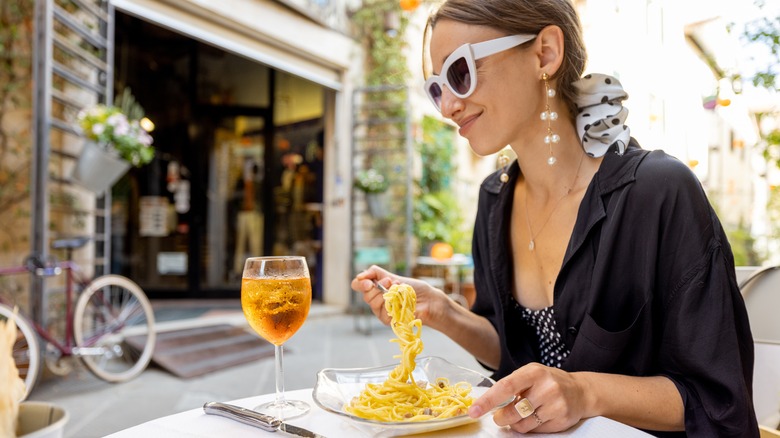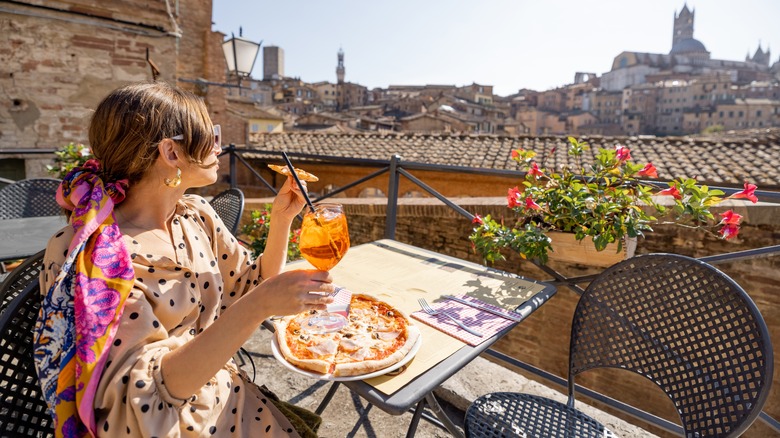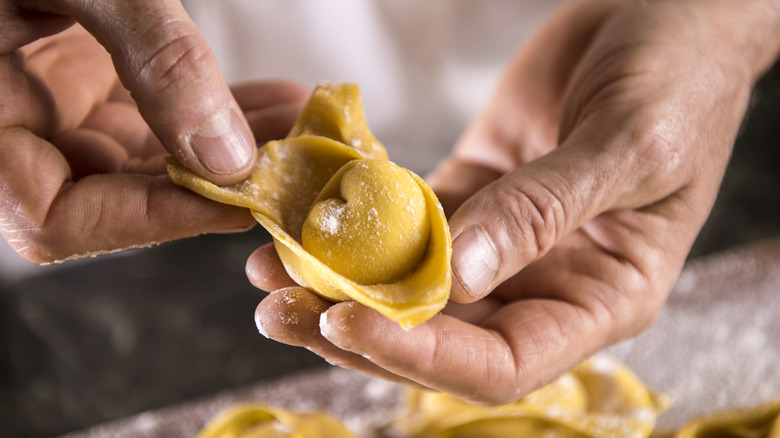If You See This Protein Pasta Food Combo On A Menu In Italy, You're At A Tourist Trap
There's pasta, and then there's pasta in Italy. And when it comes to the latter, tradition often reigns supreme. Whether it's creamy, decadent carbonara from Rome, pasta with pesto alla Genovese from Genoa, or rigatoni alla Norma from Sicily, each region and city throughout the gastronomic country is known for a specific pasta dish (if not several!). However, there's one kind of pasta dish you won't find to be traditional to any of Italy's 20 regions, and if you see it on a menu, you should take it as an immediate red flag.
The pasta dish that should be banned altogether in Italy is anything with chicken in it. Yes, that's right; you might get some fettuccine Alfredo with chicken or a Cajun-spiced chicken pasta back home, but if you find anything even remotely similar on a menu in Italy, take it as a sign to run far from that restaurant. This isn't to say that Italians don't serve chicken at all, because they certainly do, but it's often reserved as the "secondi" portion of the meal, while pasta is typically reserved for the "primi."
A guide to Italian courses
Meals in Italy are meant to be enjoyed slowly, with several courses typically being served. In order to fully understand how to order cuisine in Italy, and to tell if you're in the right place, you'll want to scan the menu prior to dining to ensure you're getting an authentic experience. If the menu is broken down into antipasti, primi, secondi, contorni, and dolci, that's a good sign, but you'll want to look further into what dishes are being offered.
You'll often start with an item from the antipasti section, which is like an appetizer. This usually consists of cured meats, cheeses, breads, and salad. Next up is primi, which is almost always some type of pasta or risotto. Many of the most popular pasta dishes in Italy don't contain any meat (with some exceptions, which use ingredients like seafood, pancetta or guanciale, pork sausage, and ground beef — the latter of which is commonly found in ragù alla Bolognese). However, if meat is what you're craving, you'll find it in the next course — secondi — which is typically meat or fish. This is where you'll get your chicken if that's what you're craving; you'll never get it in the primi course in an authentic and traditional establishment. Secondi are often not served with a side, though they can be. For sides, instead, you'll want to look at contorni, which is a direct translation of "side dishes."
Pasta dishes with meat to try instead
Just because chicken is off limits doesn't mean getting meat in your pasta dish is completely unheard of. There are plenty of authentic pasta dishes where meat is involved that will have you forgetting about Americanized chicken pasta dishes in no time. If you're visiting the severely underrated city of Modena in Emilia-Romagna, you simply must try tortellini, often served "in brodo," or in a bone broth. Tortellini is traditionally filled with mortadella, pork, prosciutto, and Parmigiano Reggiano cheese. Speaking of Emilia-Romagna, lasagne alla Bolognese is a must when in the region (specifically in Bologna, one of the country's greatest food cities). The sauce is typically made with pork and beef and is simply a must-try when visiting the city.
If you find yourself in Rome, you'll want to try either carbonara or bucatini all'Amatriciana. Carbonara is made with egg yolk, cheese, and thick hunks of guanciale, while Amatriciana is also typically made with guanciale, but in a spicy tomato sauce instead of a creamy eggy sauce like carbonara.
While chicken is a quick tell for inauthentic Italian cuisine, seafood in pasta is often a green light for a legitimate Italian meal. Risotto ai gamberi, or risotto with shrimp, is a typical dish of Northern Italy, and spaghetti alle vongole is naturally best consumed in a beach town such as Naples, where it originated, just north-west of the Amalfi Coast. Meanwhile, enjoy pasta con sarde, or pasta with sardines, down south in Sicily.


